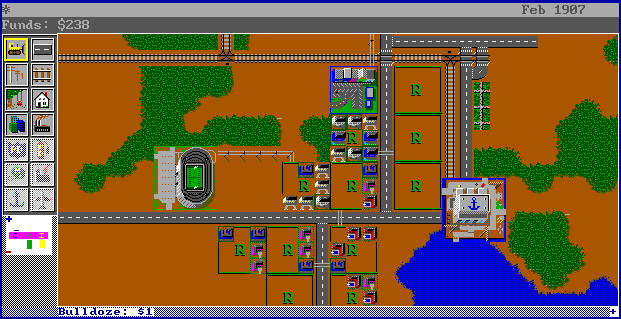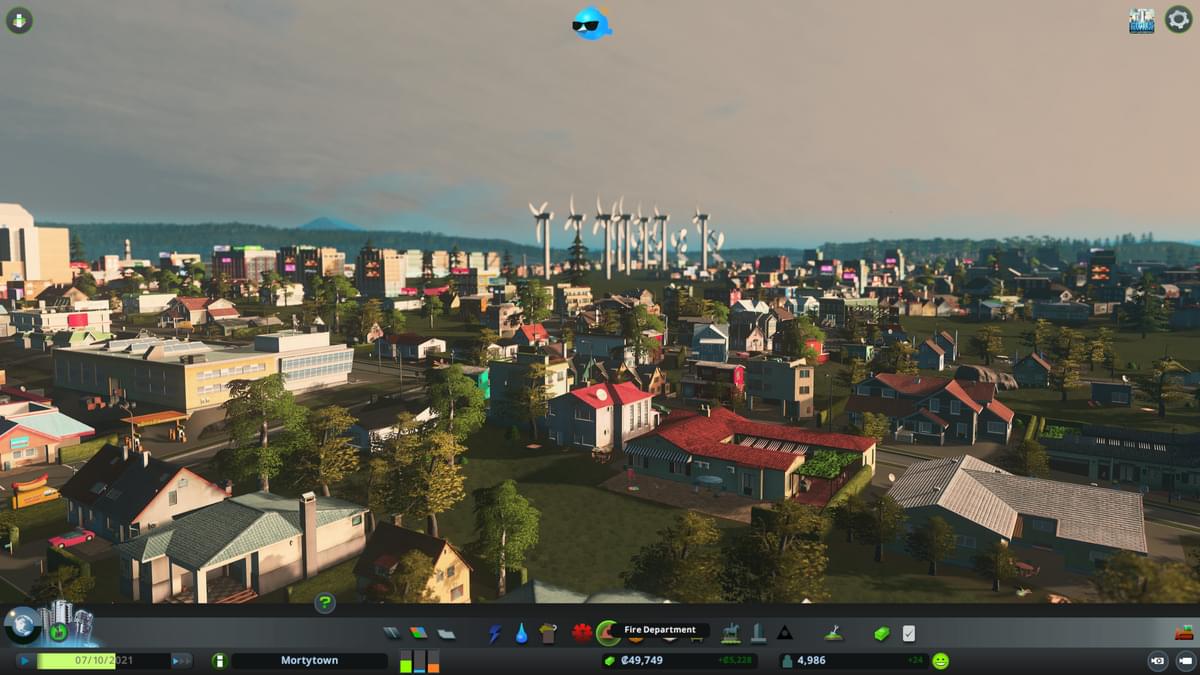This is Just a Simulation

Are we in a simulation? What some may perceive as a trope used in science fiction is a serious topic for some researchers. Bostrom’s 2003 paper on simulation theory postulates that if humanity continues on our currently trend of increasing technological development, we will reach a state where we could eventually be able to, at least partially, simulate the reality we currently live in. We could also invent said technology, but choose not to pursue simulating a world like ours, or we could simply go extinct1. If the technology is feasible and extinction is avoidable, how would we know if we are already in a simulation that others have built?
Recently both Elon Musk and Neil deGrasse Tyson have stated it’s more likely than not that we are in a simulation23. I have to admit I have a bias against what some would classify as pop science; that is popular scientists who are often given undue credit for statements made about topics not directly in their field. Still, Musk and Tyson are not the first to assert this hypothesis, nor is the base assumption an illogical one. The frightening reality is that if we are not currently in a simulation, or if we don’t one day develop the ability to partially or fully simulate our world, the other potential outcome is extinction.
You might be asking, what if partial simulation of a universe isn’t feasible? What if we develop the technology to sustain ecosystems in space, expand out into, and beyond, our solar system, but the technology to create artificial intelligence that can simulate consciousness remains beyond our grasp? What if we do discover how to simulate our universe, but simply choose not to use it?
If creating a simulated universe was possible, there are potential moral dilemmas. The ability to create a parallel universe that diverges from our own with key drastic changes could allow humanity to judge the results of certain decisions, leading to potential drastic improvements in society at the expense of the suffering of beings in simulated societies.
It’s important to note that simulating our entire universe seems currently non-feasible. To simulate every molecule would require a computation and storage backend larger than the size of the universe itself. Yet we currently do have several forms of partial simulation, some which are machine based and others which involve controlling the environment for certain individuals.
God of the Machine
In 1989, Maxis created the award winning game Sim City. This basic city planning game gave host to an entire series of games in which players managed simulated businesses and municipalities. Various gaming companies released titles that either started with sim or theme, or ended with tycoon. Games like Railroad Tycoon had game play based around creating transportation systems during the era of railway barons, while Theme Hospital places the player in the roll of managing and growing medical facilities. The genre is still alive today with titles like Big Farma, released in 2015, which allows players to manage simulated pharmaceutical companies.

In 2000, Maxis/EA Games released The Sims. In all their previous games, the concept of a person was more than likely nothing more than a set of numbers, which fluctuated over time based on algorithms and random number generators. In The Sims and its various expansions and sequels, players controlled graphical representations of simulated people. These sims were programmatic computations with various weights for skills and characteristics. Artists created animations for all the potential actions and how they would adjust based on those values. Yet overall, the simulation entity presented to the end user, the player, was deterministic. It followed the rules programmed into it, with variation applied by pseudo-random numbers generated on the computer.
We do currently simulate parts of our world, yet there is no true moral dilemma because these simulations are deterministic machines. They have no consciousnesses or self-awareness. They are simply a set of rules, random numbers and mathematical weights. We design 3D rendering engines around that data to portray it as graphical, beautiful artwork that attempts to draws a basic sense of connection with a human avatar.

Partial simulations of our world are not limited to games and entertainment. Civil engineers work with computer scientists and mathematicians to create traffic simulations to help develop better transportation systems. Statisticians use models to attempt to find correlations that can explain how parts of our world work. Physicists are constantly creating models for heat, radiation and fluid dynamics, in order to try and understand our world via simulations.
Yet in all these cases, only part of our universe is simulated. Even saying “part” is a disservice to how astronomically tiny a slice has been simulated. True simulation of consciousnesses or a meaningful facsimile of our universe is far beyond the technological capabilities currently discovered by humanity.
“All models are wrong; some models are useful.” -George E. P. Box
Human Simulations
There are situations where human beings are placed in socially constructed simulations. Company focus groups, medical trials and other research trials which utilize placebos; all involve creating simulated environments to varying degrees. Not all of these experiments are ethical. Projects such as the Stanley Milgram electroshock study and the Stanford prison experiment are examples of highly controversial experiments due to the emotional stress placed upon participants. Government research such as MKUltra and the Tuskegee Syphilis Study are two examples of highly illegal experiments which lead to torture and deaths of its participants.
Asking for volunteers to participate in a focus group is one thing, but in 2014, Facebook revealed that it had manipulated news feeds for some of their users. Over half a million people were randomly selected to have the number of positive and negative posts they saw controlled in such a way as to study the effects of social media on emotion4. Although some people may have felt outrage, this type of testing goes on all the time. A/B testing, where groups are randomly given different content, can be found everywhere from websites to banking ATMs to store kiosks. Advertisers and companies are constantly experimenting on us, often mentioned deep in the bowels of those end user service agreements that no one reads before clicking the agreement checkbox.
Some of the more morally objectionable simulations often involved human experimentation. Starting in the 1960s, the CIA operated a series of programs known as MKUltra, in which subjects were subjected to chemicals, biological agents and psychoactive drugs in order to study interrogation and mind control techniques. Many of the subjects were unaware of their participation, and at least two people in the programs committed suicide. The general public was not made aware of these programs until the summer of 1975, as a result of the Rockefeller Commission released in congressional hearings5.
No one is sure of what MKUltra consisted of since many of the documents were destroyed by order of CIA director Richard Helms in 19736. From what has been declassified, we do know the experiments were cruel, unethical and potentially illegal. Real human beings, scientists, with access to the required technology, were willing to commit these types of atrocities on living human subjects. We don’t currently have the technology to experiment on simulated beings in fake realities, but history has show us that when that era does arrive, there will be people willing to experiment in that space despite the moral implications.
Propaganda
I would even go on to argue that advertisements and news propaganda create a simulated world that is disconnected from the reality that would exist without its influence. In the 1976 film Network, a fictional news studio saw the news as less of a public service and more as a means to profit from ratings. The resulting programming on their television channel presented a world that was not accurate, capitalized on the collective fears of a society and exploited the ramblings of a mentally ill news anchor to boot revenue. What major reports criticized at the time as satire and and unrealistic view of news in America, has turned out to have been an accurate yet disheartening prediction of how news is produced and consumed today.
“When I came back to the United States, I decided that if you could use propaganda for war, you could certainly use it for peace. And propaganda got to be a bad word because of the Germans using it. So what I did was to try and find some other words. So we founded the word [sic] ‘councilor of public relations’“ -Edward Bernays7
In the United States, the people like to think their news networks are free to tell the truth, protected by the 1st amendment of the country’s constitution. In the past few years, the term fake news has entered the common nomenclature to respond to both inaccuracies on major news networks as well as to classify sensational news sites who make claims with few legitimate sources.
However, inaccurate news is not just a recent problem. In 1976, it was revealed that the CIA had been running operation Mockingbird, which had key players in several major magazines to control the flow of information and propaganda to the American people8. In 1995, it was confirmed that the CIA had invented and promoted the entire concept of American modern art as a propaganda weapon against the Soviets to boast American creativity and intellectualism9.
Even when a major event is covered in American journalism, it’s importance can be mitigated by overriding coverage with irrelevant content in an attempt to bury items that should concern their viewers. It doesn’t matter if we’re in a Western democratic country or a autocratic nation. The world we’re presented in our media is not an accurate depiction. It is distorted either by showing us the truth with a particular weight or spin, or by outright lying to us. The content we consume places us in its own version of a simulation.
Full Simulations
Fully simulating the world we currently perceive would be a daunting task, if not an impossible one. To simulate every molecule in our universe would require more molecules than those in our universe. Then again, if we are in a simulation, the host world may not have a concept of atoms or molecules at all. They may be a simplification in order to partially simulate our model.
Some of the daunting questions that both scientific researchers and philosophers are asking are if we are in a simulation, how would we know? Would there be tells? Would there be exploits that could allow us a means to observe the outside world. Could we even exist outside the simulation, or do we simply exist in the gears of some machine in the same ways data sets exist in an spreadsheet?
Could some of the unexplained mysteries of physics, such as the concepts of Dark Matter, Quantum Entanglement or questions about gravity, have an explanation in the limits of the potential simulation we are in? Or will we some day have the instrumentation and the space craft to explore and define concrete mathematical explanations for our current unsolved problems?
The Alternative
From what we can observe about our universe, we have no idea if life is plentiful or rare. Life is plentiful on our planet, where our every step on grass or concrete merges our shoes with hundreds, if not thousands, of microorganism. If our universe was just as plentiful, then you would think we would be inundated in the transmissions from long dead civilizations.
This lack of evidence for other intelligent life, which seems contradictory considering the sheer size of our universe, is often referred to as the Fermi Paradox. Coined by the Italian physicists Enrico Fermi, there are many theories and explanations for this Paradox. After all, our universe is large on a scale beyond comprehension. Civilizations might only produce broadcasts powerful enough to travel through space for a narrow window of time time. Earth may have been in the presence of alien transmissions long before we discovered fire. Broadcasts from other life might also be too alien for us to identify, intelligent life in the universe might be exceedingly rare, or we could potentially just be in a simulation.
The alternative is that what we are currently experiencing is the only reality that exists. We came into existence by evolving slowly from other life over the course of billions of years. Our perception of self and our consciousness is due to the electrochemical interaction between the hundreds of millions of neurons in our brains. When those reactions cease; when our lives end, everything that was a part of our self will simply ceases to exist. What remains of our state is kept in the imperfect memories of other humans.
Eventually our sun will burn out. We may make it to the stars and beyond, but it is also likely, we will simply go extinct. Everything that humanity is and ever was, will be extinguished, lost to the great unknown that is existence.
“I’ve seen things you people wouldn’t believe. Attack ships on fire off the shoulder of Orion. I watched C-beams glitter in the dark near the Tannhäuser Gate. All those moments will be lost in time, like tears in rain. Time to die.” -Blade Runner (Film, 1982)
-
Are You Living in a Computer Simulation?. Bostrom. Philosophical Quarterly (2003) Vol. 53, No. 211, pp. 243-255. ↩
-
Elon Musk believes we are probably characters in some advanced civilization’s video game. 2 June 2016. Klein. Vox. ↩
-
Neil deGrasse Tyson says it’s ‘very likely’ the universe is a simulation 22 April 2016. ↩
-
Facebook Tinkers With Users’ Emotions in News Feed Experiment, Stirring Outcry. 30 June 2014. Goel. New York Times. ↩
-
Chapter 3: Supreme Court Dissents Invoke the Nuremberg Code: CIA and DOD Human Subjects Research Scandals. DOE Openness: Human Radiation Experiments. (Dead Link) Archive Mirror - 31 March 2013 ↩
-
An Interview with Richard Helms. 8 May 2007. Central Intelligence Agency. ↩
-
The Century of the Self - Part 1 - Happiness Machines. (7min 56sec) 2002. Curtis. (Film/Documentary). ↩
-
Senate Select Committee to Study Governmental Operations with Respect to Intelligence Activities. 27 Jan 1975. US Senate. ↩
-
Modern art was CIA ‘weapon’. 22 Oct 1995. Saunders. The Independent. ↩
